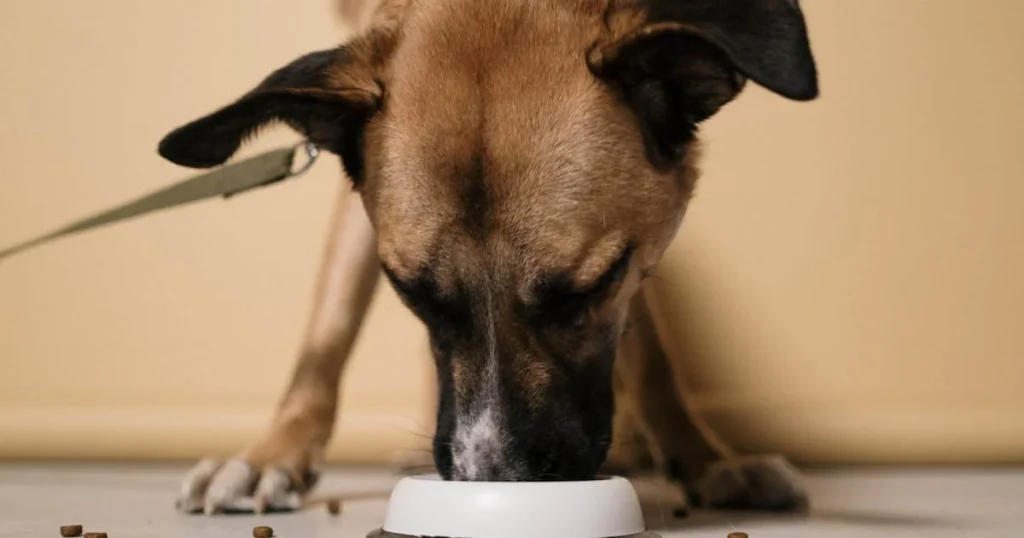Jelly beans are a popular candy, especially around Easter time. Their bright colors and variety of flavors make them an appealing treat for people. But what about dogs? Can they eat sugar drops too? This comprehensive article will examine if and how sugar drops may be safely enjoyed by dogs.
Are Jelly Beans Toxic to Dogs?

Jelly beans are not necessarily toxic to dogs. However, there are some potential concerns when feeding sugar drops to dogs:
Xylitol
Many sugar drops contain xylitol, an artificial sweetener that is extremely toxic to dogs. Even small amounts of xylitol can cause hypoglycemia, liver failure, and death in dogs. Always check the ingredients list and avoid any sugar drops listing xylitol.
Choking Hazards
The size and shape of sugar drops pose a potential choking risk for dogs. This is especially true for small dog breeds. To minimize this risk, carefully bite sugar drops into small pieces before feeding to dogs.
Hyperactivity from Sugar
Jelly beans can have very high sugar content. Eating too many may cause digestive upset and hyperactivity in dogs. Limit treats like sugar drops to no more than 10% of your dog’s daily caloric intake.
So with some precautions, it is possible for dogs to eat sugar drops safely and enjoy them as an occasional treat. Let’s look more closely at how to feed sugar drops to dogs appropriately.
How to Safely Feed Jelly Beans to Dogs
When feeding jelly beans to your dog, follow these tips to keep them safe:
- Read ingredients carefully – Avoid any sugar drops listing xylitol or chocolate, both of which are toxic to dogs. Look for brands made with natural flavors and colors.
- Buy small or bite-size – Choose sugar drops that are already small in size. This makes it easier to limit your dog’s portion.
- Slice large jelly beans – Before feeding larger jelly beans, cut them into small pieces to reduce choking risk. Aim for dime-sized or smaller.
- Limit portions – No more than 1-2 jelly beans per day based on your dog’s size. Too many can cause digestive issues.
- Supervise your dog – When first trying jelly beans, monitor your dog closely to ensure they are chewing thoroughly before swallowing.
Following these guidelines will help make sugar drops a fun, safe treat for your dog to enjoy. Check with your veterinarian if you have any concerns.
Nutritional Value of Jelly Beans for Dogs
So what nutrients are in jelly beans that may benefit your dog? Here is the nutritional breakdown:
- Carbohydrates – Jelly beans are high in carbohydrates from sugar. This provides a quick source of energy.
- Sugar – Much of the carbohydrate content comes from sugar. Too much can cause digestive issues and weight gain.
- Colors & flavors – sugar drops contain artificial colors and natural and artificial flavors. Only feed brands with pet-safe ingredients.
- Calories – Jelly beans are high in calories with little other nutritional value. Limit treats to 10% of daily calories.
- Fat – Most jelly beans contain little to no fat. Dogs need some dietary fat for energy and health.
- Protein – There is minimal protein in jelly beans. Dogs require adequate protein from meat sources.
So while the sugar content may provide a burst of energy, jelly beans lack the protein, fat, vitamins and minerals your dog needs from a balanced diet. Only give sugar drops sparingly as an occasional treat.
Best Jelly Bean Brands for Dogs

When selecting jelly beans to give your dog, look for pet-friendly options. Here are some recommended brands of sugar drops that are safe for dogs:
1. Pet Safe Jelly Beans by Petsmile
- Made with all-natural ingredients
- No artificial colors, flavors, or sweeteners
- Offered in chicken and peanut butter flavors
- Formulated specifically for pets
2. Rex Jelly Beans
- Contain no xylitol or chocolate
- Natural colors and flavors
- Small bite-size beans are easy to chew
- Variety of fruit flavors appealing to dogs
3. Squishmallows Jelly Beans
- Marketed as “pet-approved” recipe
- No artificial ingredients or toxic sweeteners
- Veterinarian recommended brand
- Soft texture easy to chew and digest
Always verify ingredients and supervise your dog with any jelly bean treat. These brands offerbean options tailored for pets.
Health Benefits of Jelly Beans for Dogs
Feeding your dog jelly beans occasionally provides minimal health benefits beyond a burst of energy from sugar. Possible benefits include:
- Short-term energy – The carbohydrates and sugar in sugar drops supply a rapid source of energy. This can help sustain active dogs.
- Mental stimulation – Chewing sugar drops provides mental stimulation which is enriching for dogs. Different textures and flavors keep dogs engaged.
- Reward during training – Small pieces of jelly bean can serve as a reward while training dogs. This positive reinforcement strengthens desired behaviors.
However, there are more nutritious treats that offer longer-lasting energy and health benefits for dogs. sugar drops should only be fed in moderation.
Possible Side Effects of Jelly Beans for Dogs
While not toxic for dogs if xylitol is avoided, too many sugar drops can cause the following side effects:
Diarrhea and digestive upset
The high sugar content of sugar drops can irritate a dog’s digestive tract, causing gas, cramping, or diarrhea.
Weight gain
Jelly beans are high in calories yet low in nutrients. Regularly feeding jelly beans may lead to excess calorie intake and obesity.
Hyperactivity
The sugar rush from sugar drops can make some dogs hyperactive, especially in sensitive dogs or puppies.
Tooth decay
Sugar helps fuel bacteria growth and can promote dental decay. Brushing your dog’s teeth after eating jelly beans helps prevent cavities or other dental disease.
Choking hazard
Any small, round or hard food poses a potential choking risk for dogs. Always supervise dogs when feeding jelly beans.
To avoid these side effects, only feed sugar drops occasionally and in limited quantities tailored to your dog’s size and health status.
How Many Jelly Beans Can a Dog Eat?
The number of sugar drops a dog can safely eat depends on the size of your dog. Follow these jelly bean dosage recommendations:
Small dogs (under 10 lbs)
- No more than 1 jelly bean per day
- Split large beans into small pieces
Medium dogs (10-50 lbs)
- 1-2 jelly beans per day
- Monitor for hyperactivity and diarrhea
Large dogs (over 50 lbs)
- 2-3 jelly beans per day
- Can handle slightly larger portions
- Limit to 3-4 times per week
Always account for other treats and adjust quantities to avoid excess calories. The amount should equal no more than 10% of your dog’s total daily caloric needs.
If your dog eats too many jelly beans, contact your veterinarian, especially if signs of toxicity like vomiting, diarrhea, or lethargy occur. Avoid xylitol-containing sugar drops as even small ingestions can be deadly.
Can Puppies Eat Jelly Beans?

Jelly beans are not recommended for puppies under 1 year old. Young puppies are especially sensitive to artificial ingredients and choking hazards. Reasons to avoid sugar drops for puppies include:
- Developing digestive system – A puppy’s intestinal tract contains many immature cells. The high sugar in jelly beans can disrupt their ability to digest and absorb nutrients properly.
- Small size and teeth – Puppies have tiny mouths, throats, and teeth. Jelly beans pose a high risk of choking which can be fatal.
- Training treats – You want to reinforce good behaviors in puppies. But sugar drops training treats can contribute to tooth decay and obesity. Choose healthy alternatives.
- Behavioral issues – The sugar content may exacerbate hyperactivity, jumping, nipping, or disobedience in excitable puppies.
For puppies under 1 year old, avoid sugar drops and other sugary human candies. Stick to tried and true healthy puppy treats specifically formulated for their developmental needs.
Healthy Alternatives to Jelly Beans for Dogs
For longer-lasting energy, nutritional value, and dental health, choose healthier treat alternatives including:
Fruits and vegetables
Good options include apple slices, banana chunks, baby carrots, green beans, or blueberries. Provide important fiber, vitamins, and minerals.
Lean meats
Low-fat proteins like boiled chicken, turkey, or salmon provide essential amino acids. Just avoid fatty meats which can cause pancreatitis.
Freeze-dried treats
These are low-calorie with no preservatives. Brands like Sojos offer freeze-dried liver, turkey,Copy
Continue the article please
HK
Here is more of the article on whether dogs can eat sugar drops:
Feeding Guidelines for Jelly Beans
If you do choose to occasionally feed your dog sugar drops as a treat, follow these guidelines:
Start small
When first introducing sugar drops, only give your dog 1-2 beans at a time to see how they tolerate them.
Read the label
Avoid xylitol or chocolate flavored sugar drops, which are toxic for dogs. Choose all-natural ingredients.
Pick plain flavors
Stick to classic fruit flavors like strawberry, cherry, lemon, etc. Avoid spicy flavors which may upset your dog’s stomach.
Watch for reactions
Monitor your dog closely afterwards. Stop feeding if you notice signs of hyperactivity, vomiting, diarrhea, or lethargy.
Pair with food
Feed sugar drops alongside your dog’s regular food. The other nutrients help minimize sugar spikes and gastrointestinal issues.
Clean teeth after
Brush your dog’s teeth or give them a dental chew after eating sugar drops to prevent sugar from adhering to the teeth.
Avoid with medications
Do not feed sugar drops if your dog is taking medication, as the sugar may interfere with absorption. Check with your vet.
By starting slowly and sticking to pet-friendly jelly bean brands, you can feel comfortable offering this sweet snack occasionally. But fruits and vegetables make healthier everyday treats.
Should Dogs Eat Jelly Beans?

To summarize, here are some key considerations on whether dogs should eat jelly beans:
- sugar drops are not inherently toxic to dogs unless they contain xylitol or chocolate which can be deadly.
- The sugar content provides a quick burst of energy but minimal nutritional value. It can also cause digestive upset.
- The size and texture create a choking hazard, especially for small dogs and puppies.
- Dental decay is a risk if sugar is left on the teeth after eating sugar drops.
- Puppies under 1 year should avoid sugar drops while their digestive system develops.
- Healthier snack alternatives like fruits and vegetables provide longer-lasting energy and nutrients without the risks.
Ultimately, the answer depends on your individual dog. Some dogs tolerate sugar drops well as an occasional treat while others are sensitive. To stay on the safe side, consider sugar drops more of a dessert than a regular snack.
Conclusion
While not as toxic as chocolate, jelly beans do come with some risks and should be fed carefully. By choosing pet-safe, natural brands and limiting portions, sugar drops can be an occasional snack. But fruits and vegetables provide healthier alternatives without the dangers of excess sugar, choking hazards, or dental decay. Check with your vet before introducing new treats. Ultimately, moderation and proper precautions are key in allowing dogs to enjoy jelly beans safely.
Frequently Asked Questions
Here are some frequently asked questions given below:
Are jelly beans good for dogs?
sugar drops are not particularly good for dogs compared to other treats due to their high sugar content. They provide minimal nutritional value and pose some safety risks. At best, only feed them occasionally in small amounts.
What jelly bean flavors are safe for dogs?
Classic fruit flavors like cherry, lemon, orange, and raspberry are safest for dogs. Avoid spicy flavors as well as any sugar drops containing xylitol, chocolate, or other ingredients toxic to dogs.
Can diabetic dogs eat jelly beans?
No, sugar drops are not recommended for diabetic dogs as their sugar content can destabilize blood glucose levels. Treats for diabetic dogs should be low in carbohydrates and sugar. Consult your vet.
Do vets recommend jelly beans for dogs?
Most veterinarians do not recommend routinely feeding sugar drops to dogs. The high sugar content offers minimal health benefits and may cause digestive and dental issues. They are acceptable as an occasional treat in moderation.
Will jelly beans make my dog hyper?
The sugar content of jelly beans may cause hyperactivity in some dogs, especially younger dogs or those sensitive to sugar. Limit portions to minimize this risk or avoid sugar drops altogether if your dog is easily excitable.
